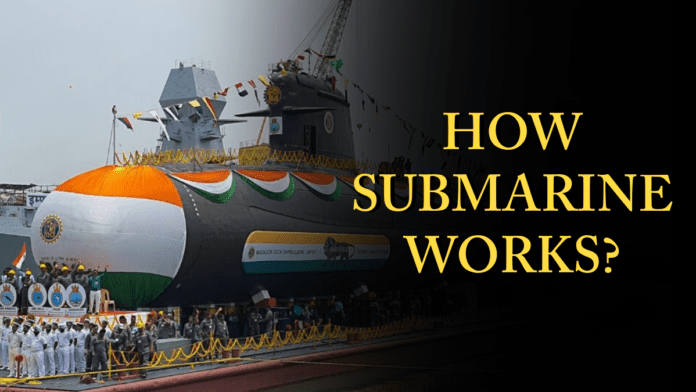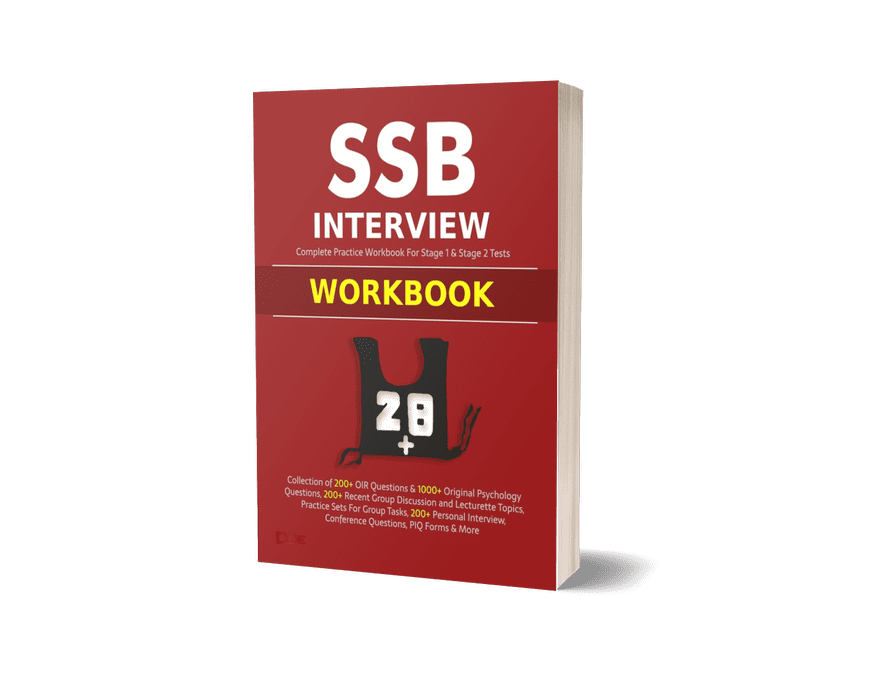How Submarine Works
It was asked in the NSB interview as to how the submarine works inside the water surface and how does it come out? So, if you are the one you have no clue or have a rough idea regarding the topic, then this post is for you only. Read the article till the end, and we promise to give you the complete knowledge about the submarine and its working. Let’s begin
The first question that arises in our mind is what a submarine is?
- A submarine is a self-propelling craft that is designed to work underwater and on the water to fulfil various operations.
- Submarine designs have a single or double hull system.
- Unlike ships, submarines travel smoothly underwater and can be powered by a nuclear reactor or fuel to propel it.
Structure of submarine
A submarine mainly consists of following components
- Pressure hull-The hull of a standard ship is the metal outside that keeps the water out. Most subs have two hulls, one inside the other, to help them survive.
- The outer hull is waterproof, while the inner one (called the pressure hull) is much stronger and resistant to immense water pressure.
- The strongest submarines have hulls made from hardened steel or titanium.
- Planes- submarines have fins called diving planes or hydroplanes.
- They work alike the wings and control surfaces on an aeroplane, creating an upward force called the lift.
- Ballast tanks-They are spaced to fill air and water in between the two hulls.
- These are called the ballast tanks and, with the diving planes, they give a sub control over its buoyancy, particularly during the first part of a dive or a return to the surface from the depths.
- When the ballast tanks filled with air, the submarine rises to the surface because it has positive buoyancy. With water inside the tanks, the sub has negative buoyancy, so it sinks deeper into the ocean.
- Engine – Most submarines except nuclear ones have diesel-electric engines. The diesel engine usually operates when the sub is near the surface, but it doesn’t drive the sub’s propellers directly.
- Instead, it powers an electricity generator that charges up huge batteries. These drive an electric motor that, in turn, fuels the propellers.
- Once the diesel engine has fully charged the batteries, the sub can switch off its engine and go underwater, where it relies entirely on battery power.
- Tower-In first submarines, the tower was packed with navigation and other equipment and was sometimes known as the conning tower.
- It’s also referred to only as the tower or the sail because in a modern submarine the controls and navigation equipment take up more room and tend to be located in the hull.
- Navigation systems – There’s GPS satellite navigation, for starters, which uses space satellites to tell the submarine its position.
- There’s also SONAR, a system similar to radar, which sends out pulses of sound into the sea and listens for echoes reflecting off the seabed or other nearby submarines.
- Another important navigation system onboard a submarine is known as inertial guidance.
- It’s a way of using gyroscopes to keep track of how far the submarine has travelled, and in which direction, without referring to any outside information.
- Life-support systems – A submarine is a completely sealed environment. The nuclear engine provides warmth and generates electricity—and the electricity powers all the life-support systems that submariners need.
- It makes oxygen for people to breathe using electrolysis to chemically separate molecules of water (turning H2O into H2 and O2) and it scrubs unwanted carbon dioxide from the air.
- Subs can even make their drinking water from seawater using electricity to remove the salt.
- Trash is compacted into steel cans, which are ejected from an airlock system (a watertight exit in the hull) and dumped on the seabed.

Working of Submarine
- Using the Archimedes principles, the buoyancy is controlled on the submarine by ballast tanks.
- Submarine resting on the surface is less dense than water that means it has positive buoyancy and it will float.
- In this condition, the ballast tanks are full of air. To submerge the submarine, it should be made less dense than water. Thus negative buoyancy is generated by venting out the air from the ballast tanks.
- The sea water comes in the tanks through flood ports and forces the air out. Thus submarine starts to sink.
- The depth of the submarine is controlled by controlling the ration of water to air in the ballast tank.
- Moreover, a submarine can get neutral buoyancy when its weight is equal to the amount of water it displaces. In this case, the sub will neither sink nor rise.
- Submarine rise again on the surface of the water, air is blown into the ballast tanks, forcing seawater out, hence gaining positive buoyancy.
Nuclear vs diesel engine?
- A nuclear submarine has an advantage of remaining submerged for a longer time than diesel submarines because diesel engine requires air to work which is only available at the water surface.
Hope this article cleared all your doubts and now you have a clear picture of submarine working in your mind. Stay connected with DDE for more videos.








 Order Now on Amazon
Order Now on Amazon

Nice. Useful
Salute to the Indian Defence Forces